The Trails Story
The culture of trail stewardship starts within our community. If you like recreating on trails, chances are you’ll really enjoy building and maintaining them too. Trail work is a little bit engineering; a little bit craft, ecology, user psychology, and a whole lot of labor, hopefully, labor of love. When in doubt, cut it out. Think Like Water!
Kananaskis Country History
Natural History
- The jagged peaks and u-shaped valleys in Kananaskis Country are 12,000 year-old reminders of the last ice age. They were revealed as kilometre-thick, million-year old glaciers melted to mere remnants.
- The actual mountains were formed over the course of 200 million years. Tectonic plates forced layers of rock to pile, break, and fold into mountains. The mountains which resulted from this pressure were originally much taller than today’s post-glacier peaks.
- The rock itself is mainly limestone made from layers of fossilized sea creatures. These creatures lived hundreds of millions of years ago in the inland sea that covered southern Alberta. Evidence of this is seen in ancient coral reefs, oyster beds and shark teeth in Kananaskis Country.
Cultural History
Archaeological evidence of humans in Kananaskis Country goes back over 8000 years. The Stoney-Nakoda, Siksika, Blood, and Kootenai First Nations all have deep connection to this land.
Captain John Palliser chose the name Kananaskis 150 years ago on his expedition through the area.
The name comes from the Cree “Kin-e-a-kis” – the name of a warrior who survived an axe blow to the head.
Kananaskis Country – An Experiment that Worked
- As early as 1902, parts of Kananaskis Country were included in the Rocky Mountain National Park (now Banff National Park). This land was removed in 1911. It was eventually turned over to the Government of Alberta in 1930.
- Bow Valley Provincial Park and Bragg Creek Provincial Park were created in 1959 and 1960.
- In 1972, the Alberta Wilderness Association proposed a wilderness area west of Calgary in the Elbow, Sheep and Kananaskis Valleys.
- That same year, the Environment Conservation Authority identified a need to set aside this area to protect watershed and to provide resource development, tourism and recreation opportunities.
- Banff-Cochrane MLA Clarence Copithorne, a rancher in the Jumpingpound area, recognized the growing pressure on the eastern slopes from Calgarians wishing to escape the city in the late 1960s and early 1970s. As Minister of Highways, Copithorne planned to upgrade the road into the Kananaskis Valley to divert people away from ranchlands.
- Calgary architect and environmentalist Bill Milne challenged the government to consult the public about the highway upgrade. Through Mr. Milne, the Government of Alberta received over 48,000 responses to a survey about the future of the eastern slopes. The majority supported creating a large protected area.
- Many say Mr. Milne and Minister Copithorne convinced former Premier Peter Lougheed to create Kananaskis Country with a single helicopter flight over the Kananaskis Lakes. It can easily be argued that simply seeing the magnificent ranges and valleys, the endless forests and rushing waters was all the convincing the Premier needed…
- In 1978, Premier Peter Lougheed officially dedicated Kananaskis Country and Kananaskis Provincial Park (now Peter Lougheed Provincial Park).
- Nearly two-thirds of the multi-use area envisioned by Peter Lougheed is now protected as a park, ecological reserve or recreation area.
- The needs of industry, ranching and tourism are still balanced with the mandate to preserve the animals, plants, and processes that keep the Kananaskis Country ecosystem healthy.
There are varying degrees of protection and permitted activities within the different categories of landscape, which include six provincial parks, four wildland provincial parks, an ecological reserve, and numerous provincial recreation areas.
Provincial Parks: Bragg Creek Provincial Park, Bow Valley Provincial Park, Canmore Nordic Centre Provincial Park, Peter Lougheed Provincial Park, Sheep River Provincial Park, Spray Valley Provincial Park
Wildland Provincial Parks: Bluerock Wildland Provincial Park, Bow Valley Wildland Provincial Park, Don Getty Wildland Provincial Park, Elbow-Sheep Wildland Provincial Park.
Ecological Reserve: Plateau Mountain
Where Do Trails Come From And How Are They Managed
The very first trails arose long ago by wildlife migrating from place to place seeking food and shelter. With the settlement of people most of these earliest trails followed natural features such as creeks, rivers, and ridges. In the latter half or the 20th century, the art and science of trail design and management developed rapidly to provide quality recreation opportunities for hikers and horse riders, and later nordic skiers, and mountain bikers. The techniques of trail design, construction, and maintenance have been improved steadily by a growing force of agency, private, and volunteer trail experts.
Maintenance of designated/ sanctioned/ formal/ recognized/ official trails in Kananaskis Country are the responsibly of Alberta Environmental and Parks (AEP, Alberta Parks and Public Land). Due to funding and resource constraints, AEP relies on partner associations to assist with trail building and maintenance, and help sustain the growing recreational trends on foot, on wheels or on a horse.
Multi use trails are most common as they cater to the biggest audience and get the most support to get built and maintained. For example, the trails in WBC are considered All-Seasons Non-Motorized Trails. They accommodate numerous activities including mountain biking, hiking, equestrian users, trail runners, skiers, snowshoers, orienteering, and dog walkers.
Single or limited use trails include specific features that make it impractical for certain groups.
Example 1: Mount Assiniboine single track for hikers and wider track for horseback riders and no bikers due to high traffic area and dangerous encounter between horse back riders and bikers.
Example 2: Star War trail in Banff is meant for bikers with wooden features that are not for horses or hikers.


